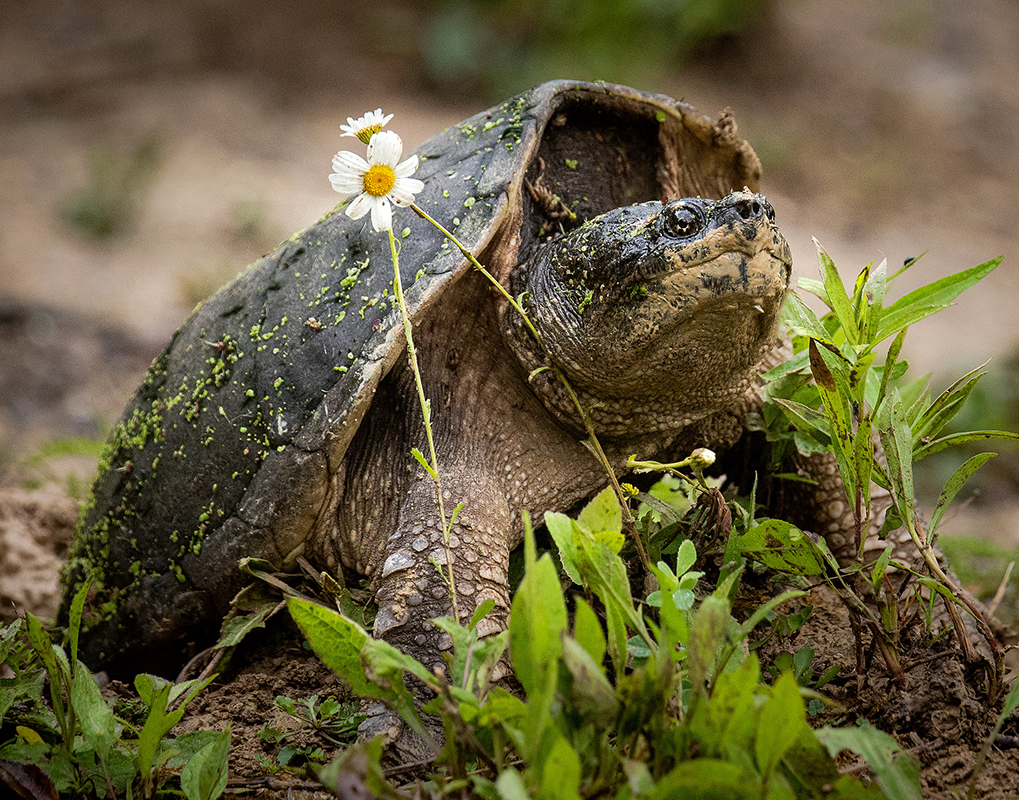
By MeadowlilyWoods
- 2,034
Reptile species have a useful and important role in ecosystems. They help control the numbers of serious agricultural pests by consuming rodent and insect pests. Removal of any species from its ecosystem can drastically alter the populations of other organisms.
Many turtles are scavengers and get their nutrients by eating dead things from the bottom of waterbodies, in addition to eating small living plants and animals. In the lakes, rivers, ponds and wetlands that they occupy, they are effectively the cleaning crew, removing sources of harmful bacteria. This “nutrient” cycling keeps all of the living things in those ecosystems, including us, healthy. Because turtles travel between both aquatic and terrestrial ecosystems they are a major source of energy transfer between the two. Turtles’ diets and unique digestive systems means that they carry and deliver the seeds, bacteria and nutrients from one habitat to another. They essentially leave the gift of restoration. Turtles help new plants grow and ecosystems thrive; they bring new seeds and the necessary plant fertilizers across wide expanses as they travel between ecosystems, through their droppings!
If tomorrow, you woke up and all snakes ceased to exist, there would be extreme consequences that would soon follow. Many animals that are considered ‘pests’ would soon have population booms and wouldn’t be able to be kept in check. It can be potentially more severe since rodents are typically reservoirs for disease (i.e. Lyme disease) that could also potentially affect humans as well.
Snapping Turtle – Chelydra serpentina
The Snapping Turtle is Canada’s largest freshwater turtle, reaching an average length of 20-36 cm and a weight of 4.5-16.0 kg. Snapping turtles have large black, olive or brown shells typically covered in algae. Their tails, which can be longer than their bodies, have dinosaur-like triangular crests along their length. Hatchlings are about the size of a loonie and are smaller and darker than adults, with pronounced ridges along the length of their shell
Status Special Concern – “Special Concern” means the species lives in the wild in Ontario, is not endangered or threatened, but may become threatened or endangered due to a combination of biological characteristics and identified threats.
Spiny Soft-shell Turtle – Apalone spinifera
The Spiny softshell is a medium-large freshwater turtle that is easily recognized by its shell, which is round, rather flat, leathery and can reach up to 54 centimetres long. It is also distinguished by its snorkel-like snout. Unlike any other Ontario turtles, this species has a soft shell. The shell is olive or tan in colour with dark blotches and tiny spine projections along the front edge. The body is usually olive, brown or grey in colour.
Status Endangered – “Endangered” means the species lives in the wild in Ontario but is facing imminent extinction or extirpation. The most significant threat to Canadian populations of Spiny softshell is habitat degradation, particularly due to riverbank stabilization, development along shorelines, changes in water levels, dams and recreation. Nest mortality can be very high due to human recreational activities at nest sites and nest predation by raccoons and foxes. Development and recreation may also be blocking access to nesting, hibernation, feeding and basking sites. This turtle suffers high mortality due to collisions with motorboats, trapping and incidental mortality from fisheries.
Spiny Soft-shell Turtle emerging from its egg.
Queensnake – Regina septemvittata
The Queensnake is a non-venomous, slender snake that can reach up to 60 centimetres in length. It lives in streams and rivers with good water quality where it can hunt for crayfish, its main food source. The body is brownish olive above with three dark stripes running down the back. The belly is pale yellow with four dark stripes running along its length. This species can be easily identified as it is the only snake in Ontario with a longitudinally striped belly.
Status Endangered – “Endangered” means the species lives in the wild in Ontario but is facing imminent extinction or extirpation. The most significant threat to the Queensnake is habitat loss due to drainage or disturbance of waterways, urban development along shorelines, and pollution. As a result of waterway pollution, crayfish, which require good water quality, have died out and Queensnake numbers have declined.
To learn more about species at risk go to: https://www.ontario.ca/page/species-risk
Photo and Video Credits – Southern Ontario At Risk Reptiles (SOARR)
Photo Credits – Steve Donnelly
Video Credits – Salthaven Wildlife Rehabilitation and Education Centre











